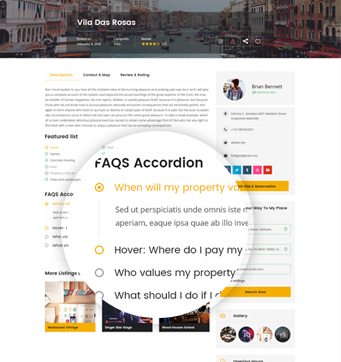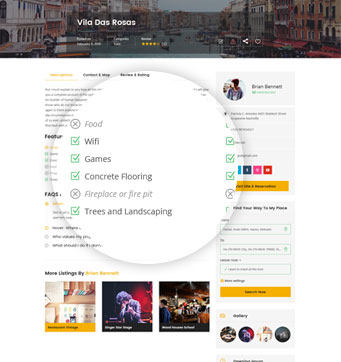The Importance Of Anchor Text In Backlinks: Enhancing Your SEO Strategy
In the realm of Search Engine Optimization (SEO), few factors wield as much influence over your website’s visibility and rankings as backlinks. Yet, beyond the mere presence of these links lies another critical element: anchor text. The careful selection and optimization of anchor text can significantly impact how search engines perceive your site and its relevance to specific queries. In this comprehensive guide, we delve into the intricacies of anchor text, its pivotal role in SEO, and best practices to leverage it effectively for enhancing your website’s search engine rankings.
Understanding Backlinks and Their Role in SEO
Backlinks are the backbone of SEO strategies, serving as links from external websites to yours. These links are akin to votes of confidence from other web entities, signaling to search engines like Google about your site’s authority, credibility, and popularity within its niche. The quality and quantity of backlinks play a crucial role in determining your site’s ranking on search engine results pages (SERPs).
While obtaining backlinks through various link building techniques is vital, it’s equally essential to understand that not all backlinks carry the same weight. High Quality links from reputable sites with strong domain authority hold more SEO value than numerous links from less credible sources. Moreover, distinguishing between do follow and no follow links is critical; while do follow links pass authority, no follow links do not contribute directly to SEO rankings but still provide indirect benefits like traffic and exposure.
Incorporating social media into your link building strategy can amplify your efforts by fostering shares and engagement, potentially leading to more backlinks from diverse sources. Additionally, guest posting on relevant blogs or websites allows you to establish authority within your industry while earning valuable backlinks.
The Basics of Anchor Text and Its Significance
At the heart of effective backlink optimization lies anchor text — the clickable text within a hyperlink. Anchor text serves as a contextual cue for search engines, providing insight into the content of the linked page. By strategically choosing relevant and descriptive anchor text, you can convey to search engines the thematic relevance of your site and improve its chances of ranking higher for targeted keywords.
Diversity in anchor text is crucial for maintaining a natural linking profile and avoiding penalties from search engines for over optimization. Overusing exact match anchor texts — where the linked text precisely matches the target keyword — can be perceived as manipulative and result in SEO penalties. Instead, a varied approach that includes branded terms, generic phrases, and descriptive keywords enhances SEO effectiveness while providing a better user experience.
Types of Anchor Text and When to Use Them
Understanding the different types of anchor text and their appropriate usage is key to crafting a balanced and effective SEO strategy:
1. Exact Match: Links where the anchor text mirrors the exact target keyword. While effective in the past, overuse can trigger Google penalties today.
2. Branded: Incorporates your brand name or variations thereof. Builds brand recognition and credibility while supporting natural linking.
3. Generic: Utilizes nonspecific phrases like ‘click here’ or ‘learn more.’ Offers minimal SEO value but enhances user experience and navigational clarity.
4. Naked URLs: Directly links to URLs without additional text. Useful for simplicity but lacks descriptive context for search engines.
5. Image Anchors: Uses images with alt tags as hyperlinks. Provides visual appeal and accessibility benefits but should be used judiciously for SEO purposes.
Each type serves a distinct purpose in your SEO toolkit, influencing how search engines interpret and rank your site based on the linked content’s relevance and contextual significance.
Best Practices for Creating Effective Anchor Text
Crafting optimal anchor text involves following best practices that align with SEO guidelines and user intent:
- Keyword Research: Conduct thorough keyword research to identify relevant terms for your anchor text that align with your content and SEO goals.
- Relevance: Ensure the anchor text is contextually relevant to the linked content, providing value to users and enhancing search engine understanding.
- Diversity: Use a mix of anchor text types to maintain a natural linking profile and mitigate the risk of over optimization penalties.
- Branding: Incorporate branded terms strategically to enhance brand visibility and authority while diversifying your anchor text portfolio.
- Placement: Integrate anchor text seamlessly within the content flow to enhance user experience and avoid appearing manipulative or forced.
The Impact of Anchor Text on Search Engine Rankings
Optimizing anchor text effectively can significantly elevate your site’s search engine rankings by reinforcing thematic relevance and authority signals. Search engines utilize anchor text diversity to discern the context and intent behind links, rewarding sites with natural and varied linking profiles. By adhering to SEO best practices and integrating diverse anchor texts thoughtfully, you can enhance your site’s visibility and attract more organic traffic over time.
Analyzing Your Backlink Profile and Anchor Text Usage
Regularly reviewing your backlink profile is essential to ensure diversity and relevance in anchor text usage. A balanced approach that incorporates varied anchor texts and aligns with SEO guidelines helps maintain a healthy link profile and supports sustainable SEO growth. Avoiding over optimization pitfalls and staying abreast of SEO trends ensures your anchor text strategy remains effective and adaptive to evolving search engine algorithms.
In conclusion, anchor text remains a cornerstone of effective SEO practices, influencing how search engines evaluate and rank your website. By mastering the art of anchor text optimization and implementing a diversified linking strategy, you can bolster your site’s authority, visibility, and organic traffic — ultimately driving sustained growth and success in the competitive digital landscape.
Mastering the nuances of anchor text optimization requires a blend of strategic foresight, SEO expertise, and adherence to best practices. By integrating these insights into your SEO strategy, you can harness the full potential of anchor text to elevate your website’s rankings and achieve long term SEO success.






